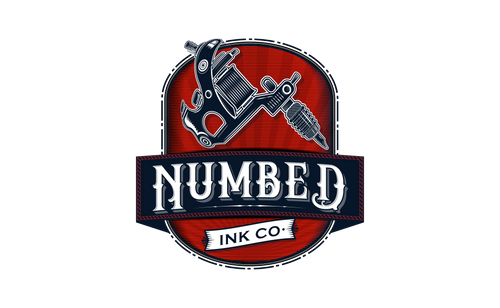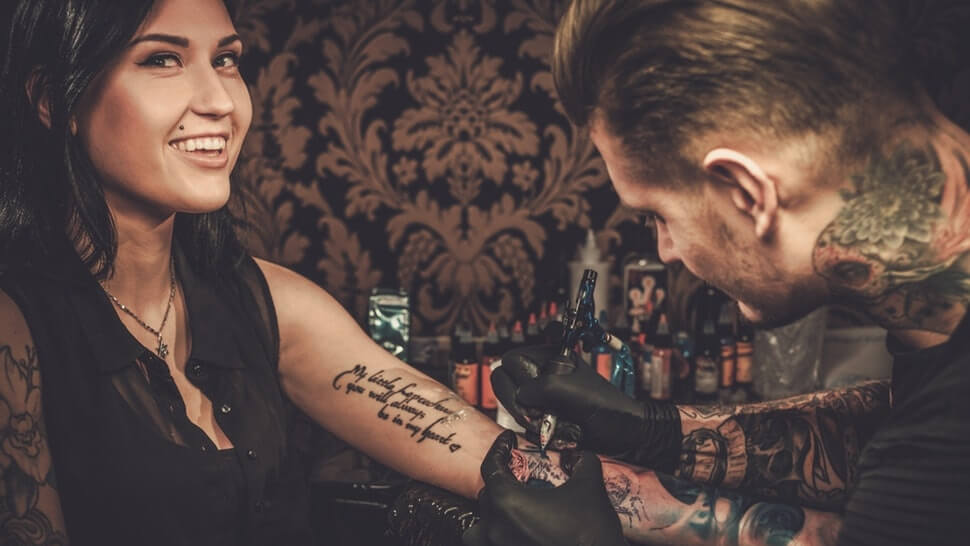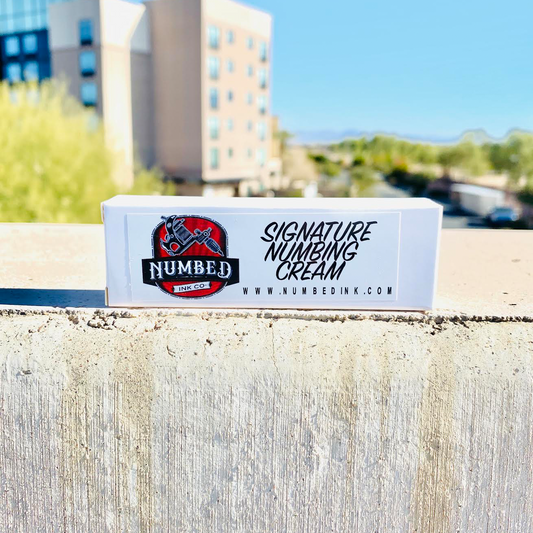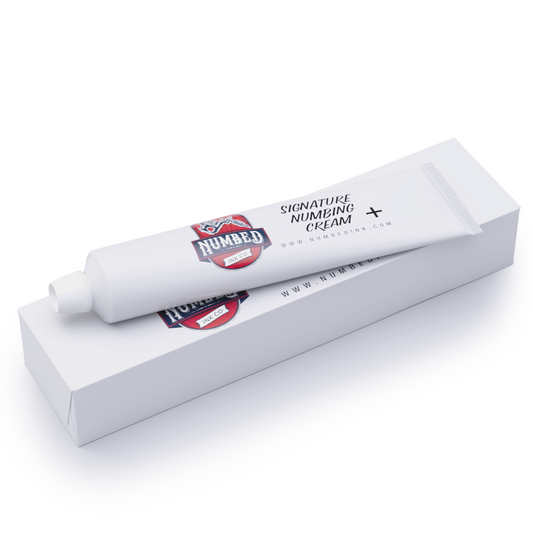Tattoos are no joke; they hurt. Bust just how bad? And can you make them hurt less?
How bad does a tattoo hurt?
Individual pain varies greatly based on factors like location, size, sensitivity, age, weight, and more.
Location
Generally, getting a tattoo on a part of your body with more muscle & skin will hurt less than one in a bony area. Bony areas have plenty of nerve endings but little fat or muscle, meaning the pain is greater in these areas.
If you’re getting your first piece of ink, it is recommended to start in a less painful area like your outer arm, upper chest, calf, or front thigh. All of these places have plenty of muscle and are less sensitive than your inner arm, ribs, or top of your foot.
Here’s a full breakdown of tattoo pain across the entire human body.

Size
Larger tattoos take more time to complete, especially sleeves and large chest/back pieces. So if you’re under the needle for longer, you’ll be in pain for longer.
If you’re getting your first tattoo, it’s best to start small to understand your pain threshold, then work your way up from there.
Once you’ve decided on a final design and location, you’re ready to go. But check out these 11 tips to make your next tattoo hurt less.
How to make a tattoo hurt less? 11 tips for before, during, and after your session
1. Choose a professional artist
The better your artist, the less pain you’ll feel. Professional artists move faster and with greater precision, meaning you’re under the needle for less time.
It’s important to meet with the artist for a consult before your session to get a feel for each other and see if you’re both a good fit.
2. Stay hydrated
Begin drinking plenty of water and moisturizing your skin at least 3 to 4 days before your tattoo.
Getting your tattoo done on dry skin doesn’t feel good and it makes it difficult for the artist to work effectively.
Be sure to use a non-scented lotion and continue drinking a healthy amount of water each day. Also, be sure to stay out of the sun for a few days prior to your tattoo to avoid any dry or damaged skin.
3. Skip the alcohol, stay sober for at least 24 hours
Having a drink or two to calm the nerves before getting your tattoo might seem like a good idea to make it hurt less, but that couldn’t be more wrong.
Alcohol is a blood thinner, heightens pain sensitivity, and dehydrates your skin, making for a very painful experience.
Not to mention, you’ve probably heard of people getting drunk tattoos and then regretting them forever. Don’t be one of those people.
4. Avoid aspirin & ibuprofen before AND after your session
Before
Avoid aspirin or ibuprofen for at least 24 hours before your session.
Though these medicines help reduce pain, they work by thinning your blood, which can be dangerous during the tattoo process. You’ll be left with a bloody session of extreme pain and damaged ink.
Most artists won’t even let you sit for your session if you’ve taken these medications in the last 24 hours.
After
Your tattoo may ooze blood for up to 72 hours after your session, which is normal.
And though you may still be in pain, medicines such as aspirin & ibuprofen may actually increase bleeding and delay the healing process, meaning you’ll be in pain for even longer.
5. Get a full night of sleep
This may not seem super important, but your body needs rest to prepare for the healing process. If you’re feeling tired or sick, your skin will take longer to heal.
And though sleep might be uncomfortable the first couple of nights after your new tattoo, a well-rested body is critical to healing.
6. Eat a full meal
Eat an hour or two before your session to avoid dizziness or fainting from the pain. And make sure to eat something with some sugar in it, as low blood sugar also increases pain sensitivity.
7. Avoid movements
It probably sounds ridiculous to avoid squirming or moving around when you’re in pain, but moving will only cause more pain & more discomfort.
Try distracting yourself with a few deep breaths, music in your headphones, or a conversation if the artist is open to talking.
8. Take breaks
Artists know how painful tattoos can be, especially if it’s your first time. Most artists will allow you to take a break if you’re in too much pain. It gives you some relief and allows them to work better.
9. Use a tattoo numbing cream
If you don’t think you can handle the pain or sit still for the whole session, try a tattoo numbing cream like our Signature or Signature+ Numbing Cream.
These creams allow you to sit pain-free your entire session, up to 7 hours at a time. You won’t feel a thing and your ink will look great.
Be sure to check with your artist before using numbing cream as some artists have varied opinions about numbing creams.
10. Wear loose clothing
Your skin is going to be sensitive after your new ink, so wear loose clothing to avoid any chafing or discomfort on the tattoo area.
If you’re getting a thigh tattoo, consider wearing loose shorts. Likewise, opt for a tank top if you’re getting ink on your upper arm, shoulder, etc.
11. Keep your skin hydrated afterward
You’ll experience the most pain during the session, but not taking care of your tattoo can lead to much more pain & discomfort down the road.
Continue drinking plenty of water and hydrating your skin with a non-scented lotion or Ink Balm, the best aftercare for your new ink. It will keep your skin hydrated, relieve pain & irritation, and soothe redness & itching around the area.
How long does the pain last?
Congratulations, you made it through the most painful part. Now, how long is this pain going to last? And though it varies for everyone, here’s what to expect:
Week 1
The area will be swollen and likely a bit sore. The pain will feel similar to a combination of a bruise and a sunburn. It’s also common to experience itchiness.
Week 2
The soreness should subside but the itchiness will continue. You’ll likely experience a burning sensation as well which is normal.
Week 3+
Depending on the size & location of the tattoo and skin sensitivity, most people begin to notice a significant reduction in pain by week 3 and beyond.
If pain persists past three weeks, or you think you may have an infection, visit your doctor or urgent care ASAP.
Tattoos are painful, but they’re so rewarding. Depending on your pain threshold and other factors, your pain levels will be different than others.
If you want to get a tattoo, but are worried about the pain, start with a small one in a less sensitive area of the body to test your sensitivity.
And if you have any specific questions, talk to your tattoo artist. They’re often the most knowledgeable about pain levels and are there to help you.



